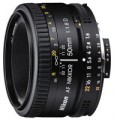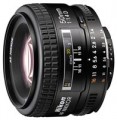Aperture value
Lens aperture is a characteristic that determines how much the lens attenuates the light flux passing through it. It depends on two main characteristics — the diameter of the active aperture of the lens and the focal length — and in the classical form is written as the ratio of the first to the second, while the diameter of the active aperture is taken as a unit: for example,
1 / 2.8. Often, when recording the characteristics of a lens, the unit is generally omitted, such a record looks, for example, like this:
f / 1.8 or
f/2.0. At the same time, the larger the number in the denominator, the smaller the aperture value:
f / 4.0 lenses will produce a darker image than
models with f / 1.4 aperture.
Zoom lenses usually have different aperture values for different focal lengths. In this case, the characteristics indicate two aperture values, for the minimum and maximum focal lengths, respectively, for example: f / 4.5-5.6
The larger the aperture of the lens, the shorter shutter speeds it allows you to use when shooting. This is especially important when shooting fast-moving subjects, shooting in low light, etc. And if necessary, the light stream transmitted by the lens can be weakened using a diaphragm (see below).
Another point that directly depends on this indicator is the depth o
...f field (the depth of space that is in focus when shooting). The higher the aperture, the smaller the depth of field, and vice versa. Therefore, shooting with artistic background blur (bokeh) requires high-aperture optics, and for a large depth of field, you have to cover the aperture.Min. diaphragm
Aperture is a design of several blades-curtains, which allows, if necessary, to reduce the diameter of the active aperture of the lens, actually reducing its aperture (for more details, see "Aperture"). In addition to reducing the light output (which can be relevant, for example, in bright sunlight), closing the aperture has another effect — it increases the depth of field. In other words, “in focus” is a larger volume of space than with an open aperture.
The values on the aperture scale are usually selected from a standard range. The numbers in it actually indicate what aperture the lens will have when the aperture is closed to a given value: for example, an aperture value of 5.6 will correspond to f / 5.6 aperture. The larger the number indicating the minimum aperture value, the more options the photographer has and, accordingly, the possibilities for setting the shooting mode (ceteris paribus).
Design (elements/groups)
The number of elements (in fact, the number of lenses) included in the design of the lens, as well as the number of groups in which these elements are combined. Usually, the more elements provided in the design, the better the lens handles with distortions (aberrations) when light passes through it. On the other hand, numerous lenses increases the dimensions and weight of the optics, reduces light transmission (for more details, see "Aperture") and also puts forward increased requirements for the quality of processing, which affects the cost of the lens.

